1944-10-30
Boeing B-17F Flying Fortress "Mugwump" - Serial # 42-30066
USAAF 388 BG, 560 BS, Fersfield, Stn 140
The unmanned plane
- Text by Sven Persson -
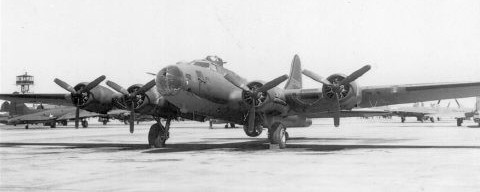
42-30066 seen on the ramp fresh out of the factory in Seattle. Photo: USAF
An event that puzzled many was the massive crater and the devastation that occured when an American bomber crashed at 16:00 on October 30, 1944 at Vissla kvarn (Whistle mill) south of Trollhättan. Apart from three engines that were recovered hundreds of meters from the crash site there were only small remains of twisted metal left of the plane. It turned out to be a B-17F that had crashed but there were no trace of any of the crew and one theory was that they had tried to reach Sweden but had been forced to bail out already over Denmark. What was not known in Sweden was that there had been only two crew members and these, 1/Lt G.A. Barnes and 1/Lt R. McCauley had jumped out of the plane already over the English Channel. The explanation for this strange event begins at the end of June 1944.
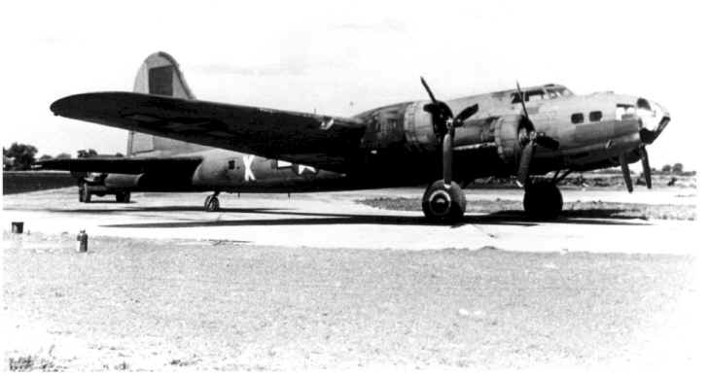
Photo: USAF
Photo of 42-30066 taken at Fersfield after removal of all armament, etc. Note that the name "MUGWUMP" has been painted over on the nose and the dark square on the fin hiding previous unit marking. The plane still carries the individual code X. The antennas for receiving signals from the mother-plane has not yet been installed. The photo was taken just before the mission to Helgoland.
Operation Aphrodite / Castor Project
A major problem for the Allies during the summer of 1944 was how to get to the heavy concrete bunkers for submarines on the north German coast and the well-hidden and secure laund pads for V1 bombs. In an attempt to find an effective alternative to the British "Tallboy" and "Grand Slam" a project was launched with the code-name Operation Aphrodite and as a follow-up program with the name Castor Project. The experiments consisted of decommissioned B-17 bombers that were cleared of all unnecessary equipment except the essentials of flying. The planes were then packed with 335 wooden boxes filled with Torpex, a British explosive with much more explosive power than TNT, they also had radio and television equipment installed that allowed the plane to be remotely controlled at a safe distance from an accompaning plane.
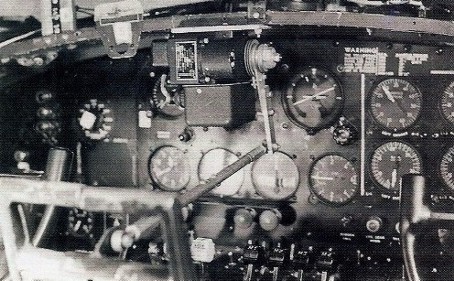
Instrument panel with remote controls. Photo: USAF
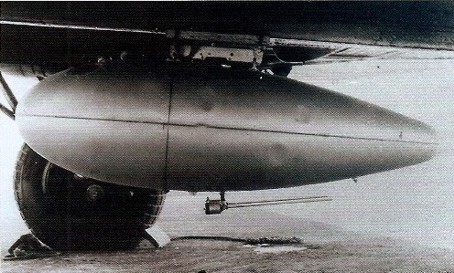
Converted fuel tank and smoke generator. Photo: USAF
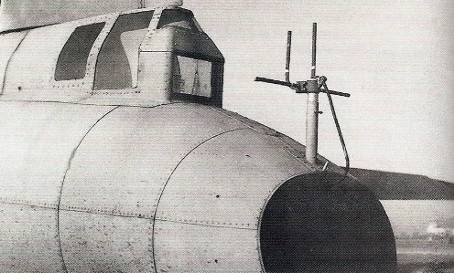
Photo: USAF
A converted fuel tank that could emit smoke, to make it easier to follow the plane, was mounted under the belly. After the rebuild the planes received the designation BQ-7. The crew, which now only consisted of the pilot and navigator would then take off and climb to a proper altitude (about 600 meters), set the course towards the target and charge the explosives before jumping with a parachute. To facilitate this the entrance hatch in the nose had been made larger. The airmen were then picked up in the English Channel by a rescue boat. In total, 22 machines were to be rebuilt (10 from Operation Aphrodite and 12 from Castor Project) but the results were a big disappointment for the Allies. Not a single machine hit the targets they were meant for (one crashed, however, next to the target and caused some damage) but they proved to be dangerous to the Allies. One aircraft caused a crater, about 30 meters wide, when it crashed in England. Several crew members were killed when they would jump by parachute from these flying bombs. The last mission took place on January 1, 1945 and the project was cancelled shortly thereafter.
The trip to Sweden
On October 30, 1944 two machines (42-30066 and 42-3438) were picked out to be guided towards and into the German submarine docks at Helgoland where they were meant to detonate. Three B-17's served as control aircraft and as escort they had with them seven P-47 Thunderbolt. As in previous missions the result was not what was expected, bad weather meant that they could not find the target and the two planes were therefore steered in the direction of Berlin. The result was that 42-3438 crashed into the North Sea after running out of fuel and 42-30066 deviated from the course and headed towards Sweden. They tried, in vain, to regain control of the aircraft and three of the escorting P-47´s followed but at a point had to turn back to have enough fuel to reach base back in England. Against all odds, 42-30066 then survived both fighters and air defense until it was just south of Trollhättan when the fuel ran out and it crashed next to Vissla kvarn. In the explosion that followed several trees were pulled out of the ground and the blast caused broken windows in houses more than 5 kilometers away!
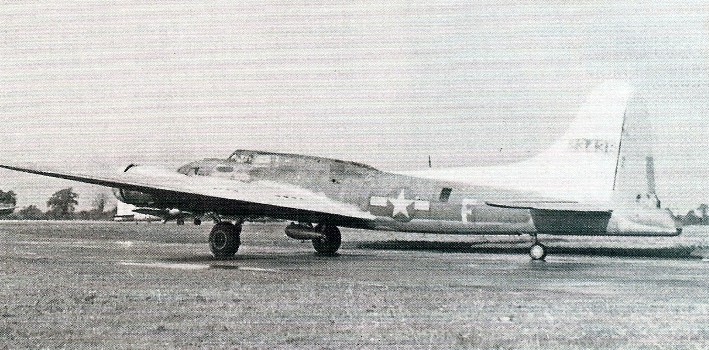
Photo: USAF
Photo of 42-3438 taken in England before the fatal mission on October 30, when the plane crashed into the sea. The smoke-tank can be seen below the fuselage and you can also see how the fin and top side of the plane has been painted yellow (the drones had previously been painted white) for better visibility from the control plane.

